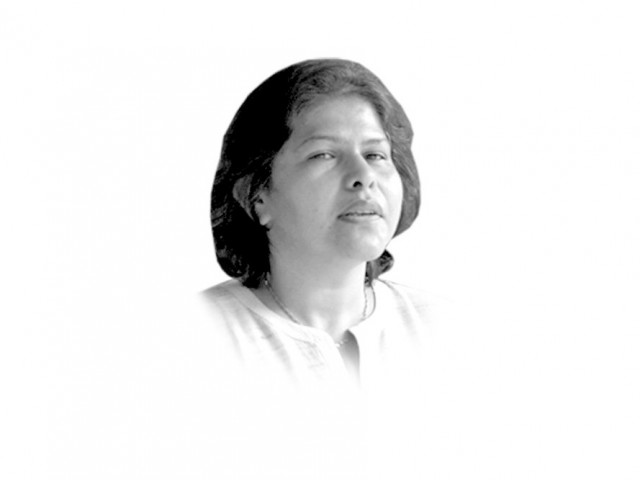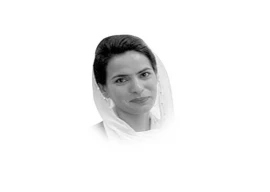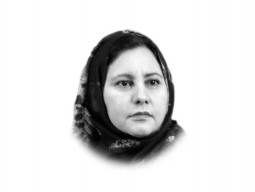
A couple of years ago, I saw this man who used to run a small shop of his own and had a house to live in. He had come to my doorstep begging for money. Upon inquiry, I found that he had lost everything to a moneylender. Unable to return a loan, he had to surrender both his business and his home. Later on, I found that this man was not the only one. In fact, he was a small part of a big painful story of the moneylending business in rural areas and newly-developing urban centres. Given the increase in commodity prices and rise in the overall cost of living, poor people are forced to meet their expenses through borrowing.
Roughly, the moneylending business has three identifiable tiers: a) public sector, b) private sector microcredit finance, and c) individual moneylenders. To start with, there is the public sector system of moneylending for agriculture sector. Dispersed mainly by the Agricultural Development Bank of Pakistan for buying seeds, pesticides, fertiliser and for meeting related needs, the system is operated through a fairly bureaucratic system that does not necessarily determine if the person borrowing the money is actually using it. Resultantly, the greatest beneficiaries are big capital and large landowners who often use the system to access resources in the name of small farmers they can influence.
The other public sector scheme pertains to Khushhali Bank which is relatively a better option. A microcredit finance bank established by the Government of Pakistan for poverty reduction, it has a better system of moneylending. Money is distributed to a group of people against a plan or a project. Furthermore, a relationship is established over a few years and there is not mark-up.
The second tier pertains to private-sector ventures which have their own set of problems. Although some of the private microcredit banks claim to give small loans to help people start a business, it was found that ultimately, a lot of loan is actually used to meet personal expenditure rather than establish ventures. In rural areas or small towns in particular, representatives of these banks complete the paperwork to offer venture capital which is utilised for other purposes with their knowledge. The only good thing about this scheme is that, ultimately, the borrower has to pay about 20 per cent annual interest rate which is nothing in comparison to what they pay the individual moneylenders. Also, the wiser people can actually benefit and set up ventures through this scheme.
The most extortive tier is the third one at which individual moneylenders give loans to individual borrowers at exorbitantly high rates. For instance, I talked to a woman who had borrowed Rs1,000 at an interest rate of Rs300 per month. Since she could not return the Rs300 in interest in the first month, it added up and was counted as capital to be paid the next month with an additional interest rate. This is a system that perpetuates borrowing and sustains poverty. In this particular case, the borrower was a woman who wanted to satisfy some urgent needs at home like buying clothes for her children for a family wedding. There are other cases where the extortion is even higher. This refers to gamblers as borrowers. A lot of such moneylenders can be found around gambling dens where people can lose money fast and are often in search of quick funding options. There are instances when people, who were already poor, lost everything including close relations like wives and even daughters. This is because if you are unfortunate enough to lose everything you have borrowed, the lender can extract any price or can force the borrower to pay back through selling any precious commodity he owns. Such cases are rarely reported.
These third-tier moneylenders have their own network of people who identify and introduce potential borrowers, and goons that can later help in getting the money back. Given the nature of policing in the country, the police rarely confront these musclemen or the moneylenders. In any case, the local police are often involved in patronising gambling dens and the moneylenders in return for their own cut. The state’s law-enforcement system is completely redundant and in no shape to meet the challenges of internal security, which should not only include traditional crimes like theft, homicide and others but should cater to these new dimensions as well.
Another interesting aspect of this extortive moneylending system is that primarily the rural and urban middle class runs these operations. These are the middle-sized shopkeepers and businessmen who are engaged in this business which is essentially a shareholding venture. The trick is not to lend large amounts but to give relatively small amounts to people who can be chased and coerced easily. The goons who follow the credit-line also get a cut for recovering the money and so does the person who has initially introduced the borrower. What I found even more interesting in my own village was that some of the moneylenders were seemingly god-fearing men who would otherwise lay down people’s lives for not observing religious practices. Surely, money has its own religion.
It is also important to note that this system is not peculiar to one village or town but happens all over the country. This moneylending is lethal as it exacerbates poverty, crime and general misery of the people who get further impoverished due to losing capital and assets. As mentioned earlier, people are known to sell off their assets including (sometimes) their family members, hence the network poaches on individual desperation and turns poverty into a never-ending cycle of life.
This is a time that microcredit finance needs a serious relook and regulation to get rid of those who extort several pounds of flesh.
Published in The Express Tribune, January 10th, 2013.














COMMENTS
Comments are moderated and generally will be posted if they are on-topic and not abusive.
For more information, please see our Comments FAQ